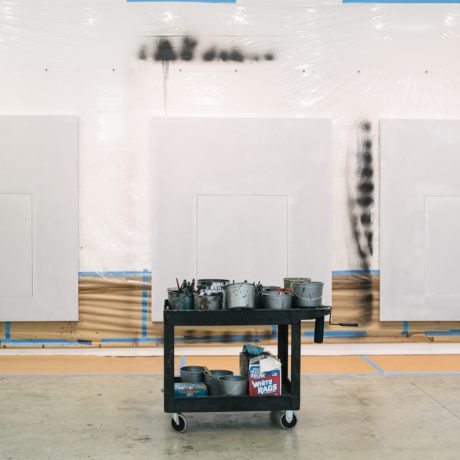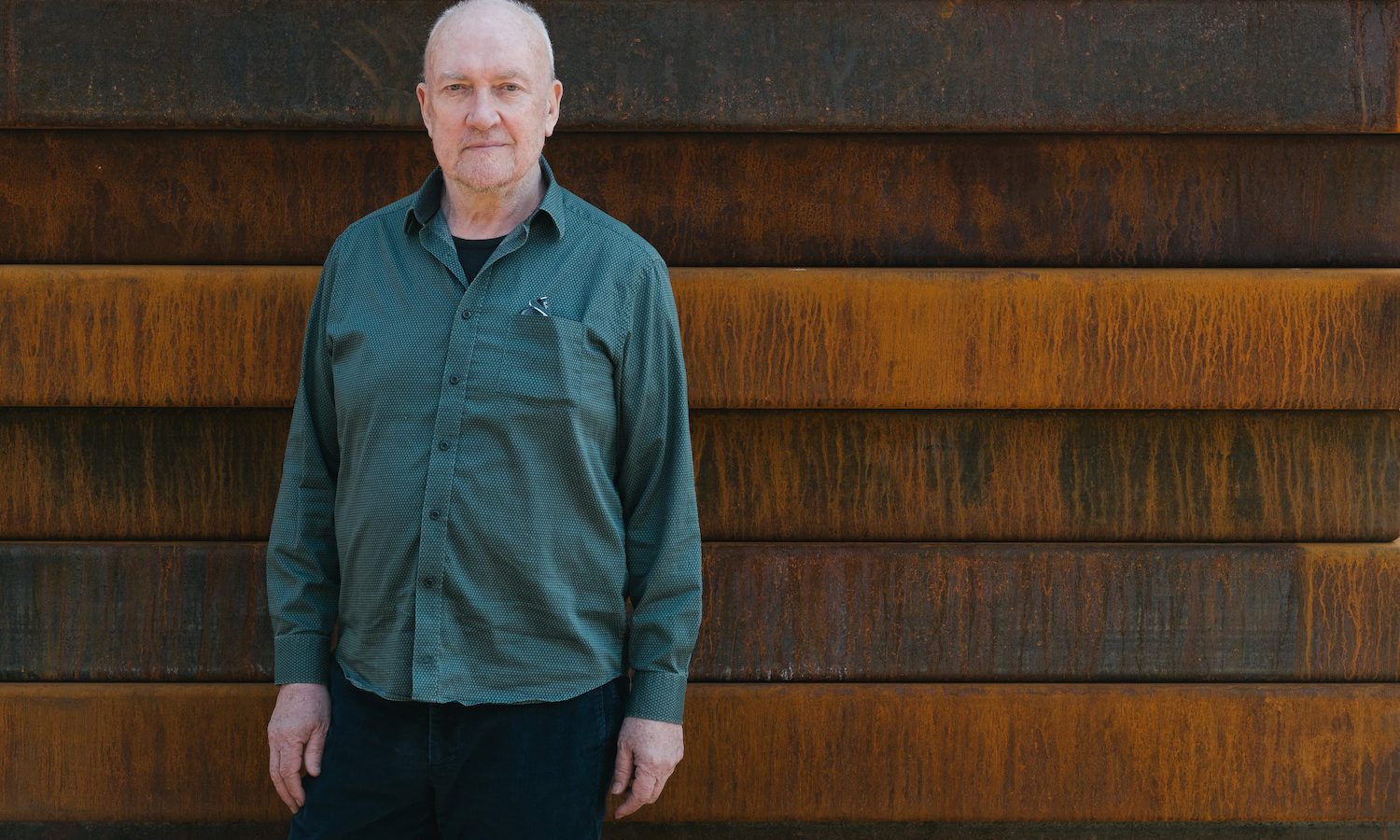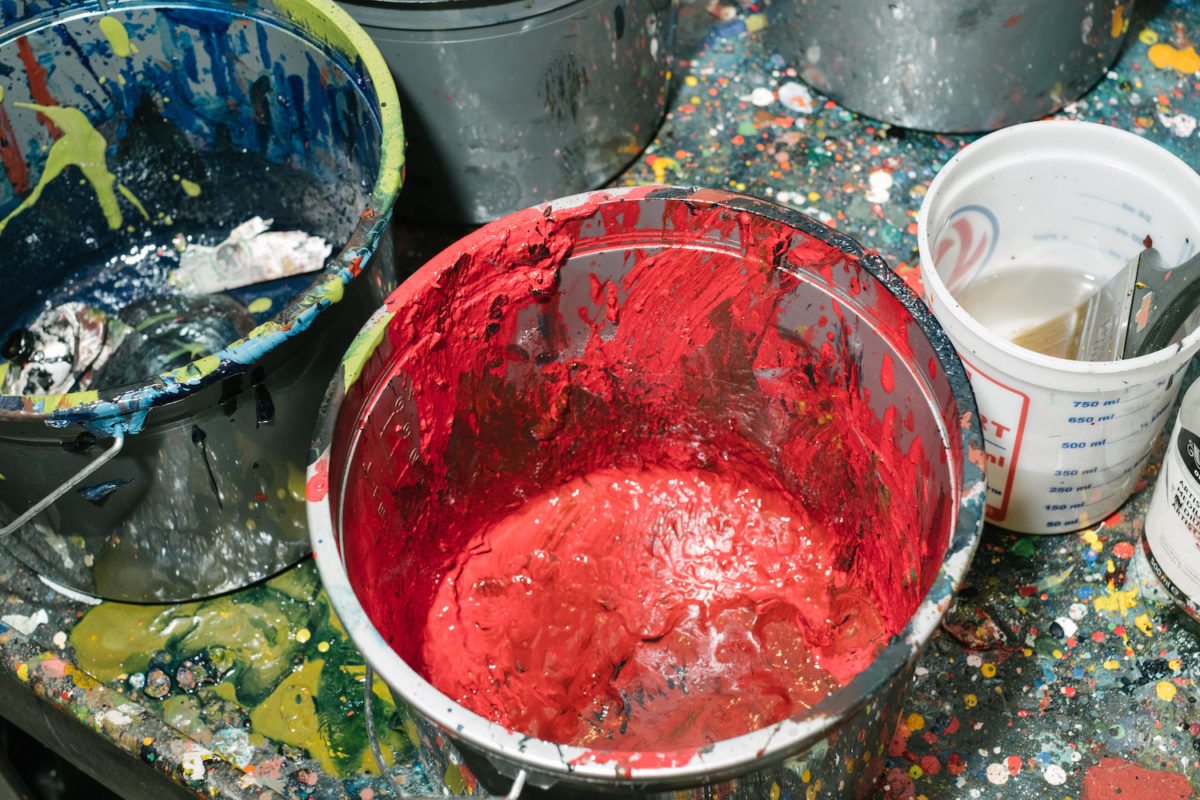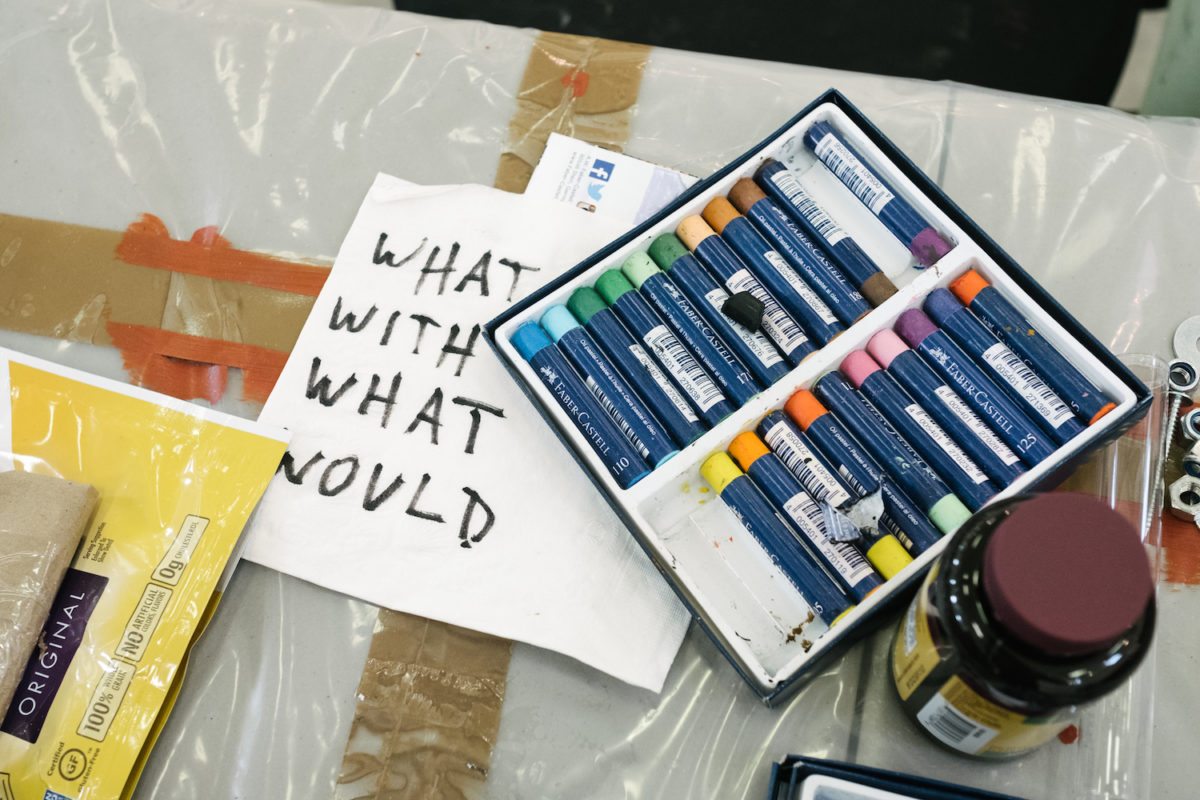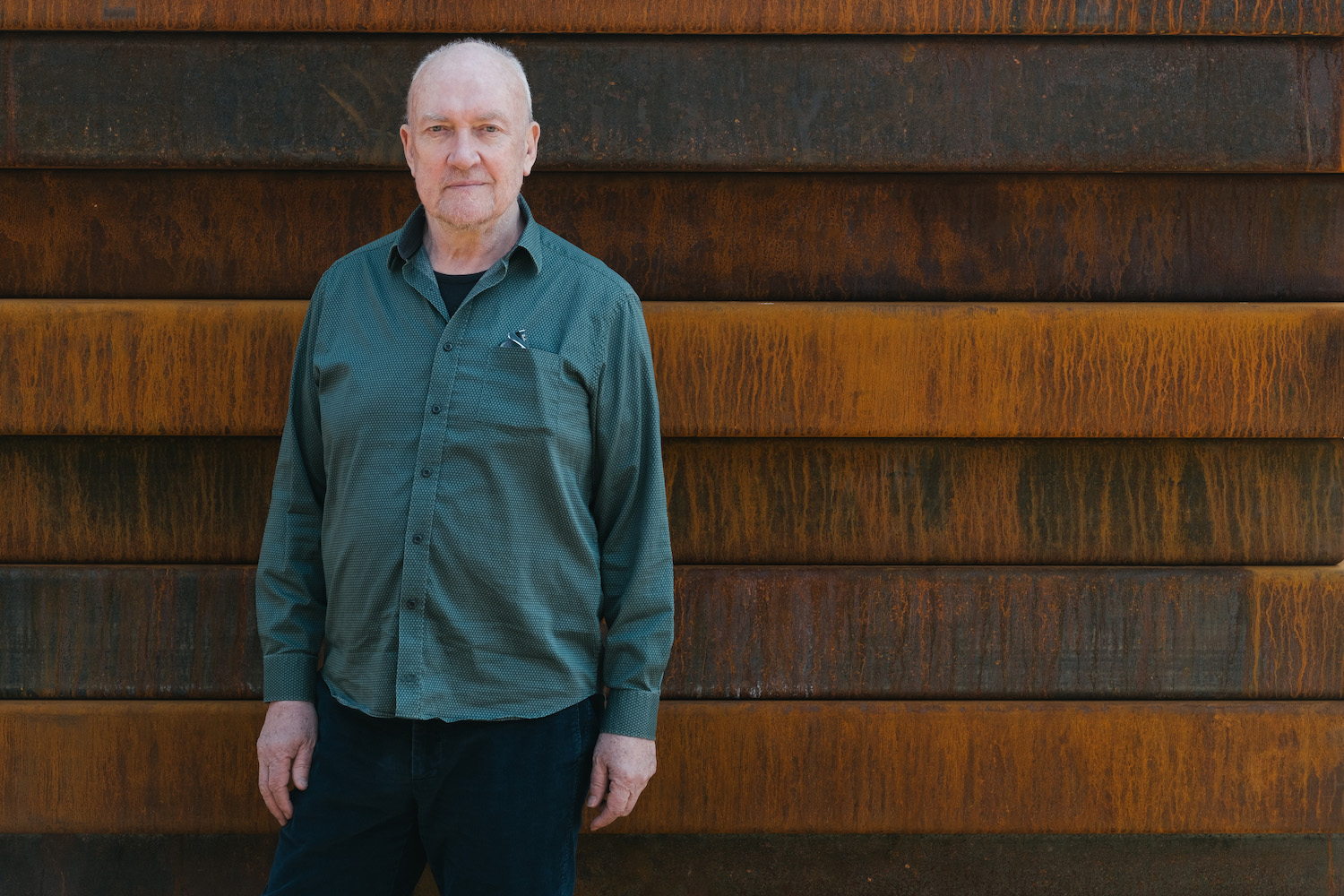
When I was last in New York I took the bus an hour’s ride north of Manhattan, to historic Tappan, and visited Sean Scully in his studio. I first met the contemporary painter at his other New York studio in Chelsea, and also spent a great weekend with him when he was over in the UK, looking around Yorkshire Sculpture Park near Wakefield, as he prepared for his new exhibition.
What brought you out to Tappan?
I always used to work and live in the same place, that’s the traditional New York style, to live and work in a loft. You fix it up, put up the walls, then you go down with a big sprayer and paint it all white. I did all that and for twenty-five years I lived in a loft. But once you have a child your life needs a domestic situation and that required me to buy a house, which I’ve done, and instead of going in and out of the city all the time, which I got very fatigued doing, I decided to buy this old broadcasting station here in Tappan.
How important is a sense of place?
I don’t pay much attention to where I am. I have a very weak relationship with place. This is a crucial point because when I came into this world we were basically homeless and a lot of the time in Dublin we lived on the streets. We were given shelter by relatives before we came to the Old Kent Road, then Islington, in London. Basically, I’m a Bedouin, nomadic or, as they call them in Ireland, a traveller.
Do you feel under pressure if you’re stuck too long anywhere?
Yeah, I don’t really develop roots, I don’t know how to because I was trained not to do it, and that’s stayed with me all my life. I’m not nostalgic about places, I’m nostalgic about people and friends. I’m sentimental about things from the past. I’m basically too sentimental to be a famous artist.
Why? Do you need to be a certain type person to be an artist?
Yeah, the artists I know who are traditionally famous, like Damien Hirst, seem more urban or hip in some way. I’m very stuck in the past, trying to fix something that can’t be fixed. So, I have this ridiculous relationship with time and place, but maybe that’s my strength.
But with this studio here in Tappan there is a sense of being grounded to something. Although you’ve turned the studio you’ve got in Chelsea into an art gallery, so, these are quite transient spaces for you…
I don’t really have a relationship with it anymore. Once I stop painting in it, the relationship between me and that Chelsea space became very distant.

You were talking about painting the décor white in your studio––the white cube––is it a case of making everything neutral? Could you be anywhere in the world?
I have a big studio in Berlin that’s beautiful, but I have no relationship with it because I don’t really like Berlin much.
So, why did you get a studio there then?
I dunno. It was a whim. I am very capricious, I do things and then I change my mind, I’ll get an apartment somewhere and then I change my mind if I don’t really like the place. I got fed up with living in Munich, I feel that it’s an exclusionary society. I wanted the antidote of that and a lot of friends said to “Come up to Berlin, you’d like it.” So I found this place in the city and when it was fixed up I didn’t really want to be in it anymore.
“I do drawings; impressions of what I want. Then I expect it to come out right. When it doesn’t, I’m not happy”
We were together at Yorkshire Sculpture Park ahead of your exhibition this autumn. I recall that you had the show mapped out in your head before we’d even got half way around the space…
It’s the same size as my studio, so of course I can imagine the show very easily. It’s a perfect square; the ceiling height is the same. I designed the exhibition before we’d walked around the space. I’d already figured it out.
Sculptures—where do you make them? On site?
Usually outdoors, but my sculptures are a lot more conceptual than my paintings. They are really made from instructions—my instructions. I do drawings; impressions of what I want, then I expect it to come out right. When it doesn’t, I’m not happy [laughs].
Nobody ever blames your drawings then?
No.
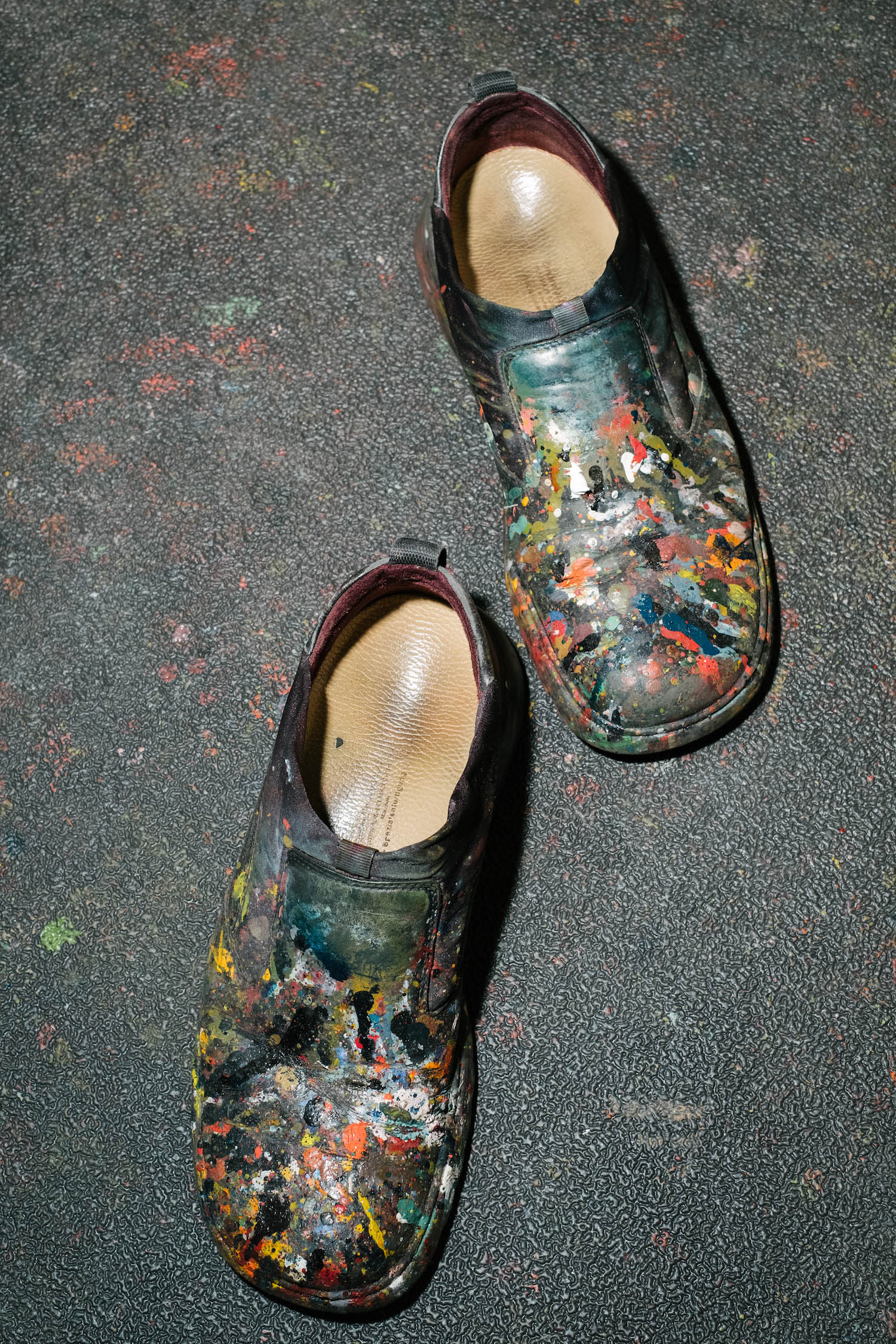
How do you know what works as a drawing and what can be turned into a sculpture?
I think they should all be sculptures, but there’s just not enough time in life to make them. One thing YSP did offer me was land, and that gave birth to the sculptures, because OK, I made sculptures indoors in Chelsea and they were very nice, but when you’ve got a big outdoor space it’s fantastic.
Do you have a routine in the studio?
No, I always think of doing a painting a bit like a bank robbery, you have to get in and out before you get caught because you’ve got some other obligation.
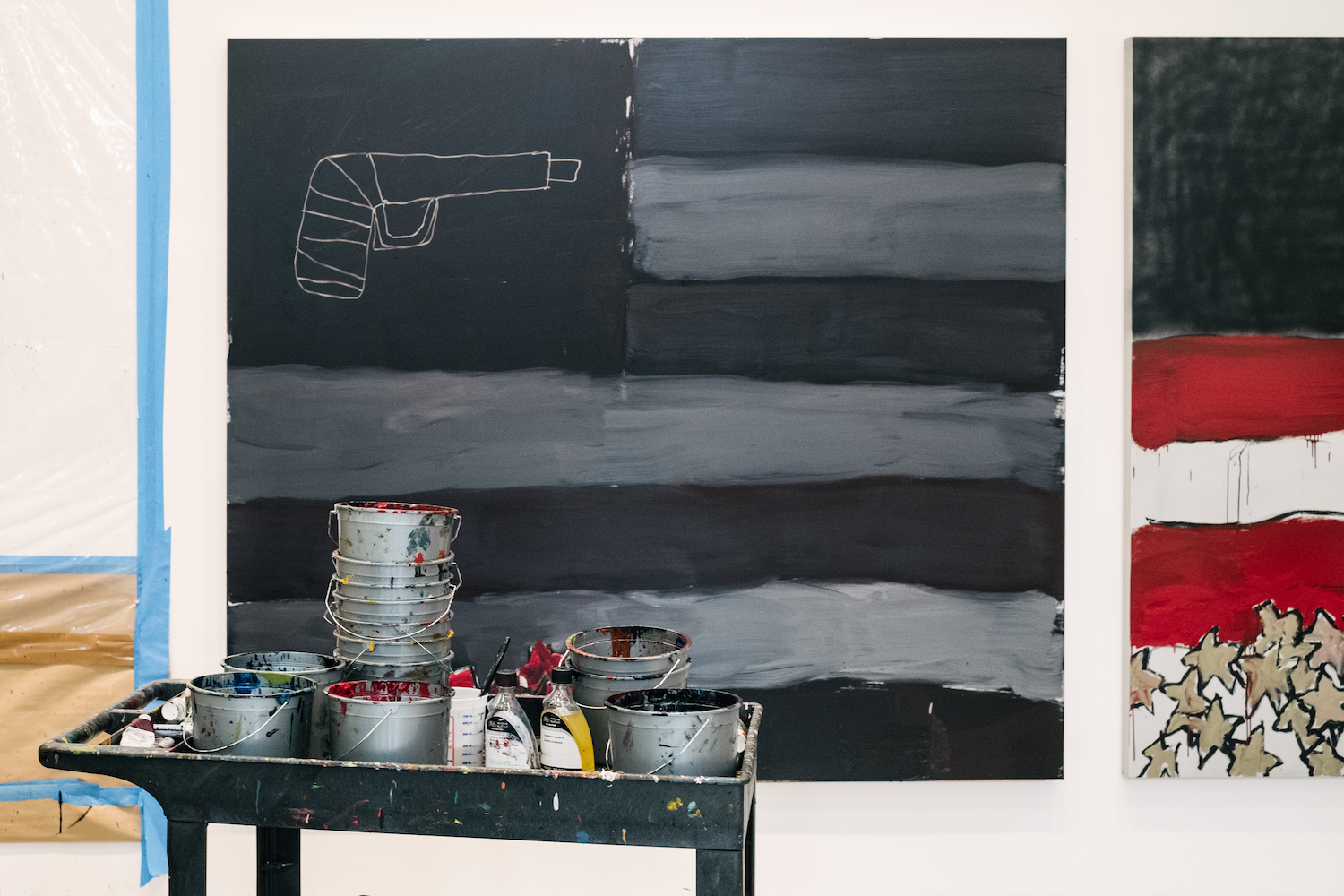
Is creativity a guilty act for you?
Oh no, I never feel guilty when I’m making a painting. I feel immensely sad, there’s a lot of stuff, a lot of political stuff roaming around in my head; a lot of anger that I have about the way the world is. There’s a lot of fight in me, a lot of outrage. I think art is very important, it’s a pushback against the exploitation that’s in the world. I see myself as some sort of cultural warrior. Art has a more important role now than ever. For me, art is a mission.
Photography © Don Stahl
